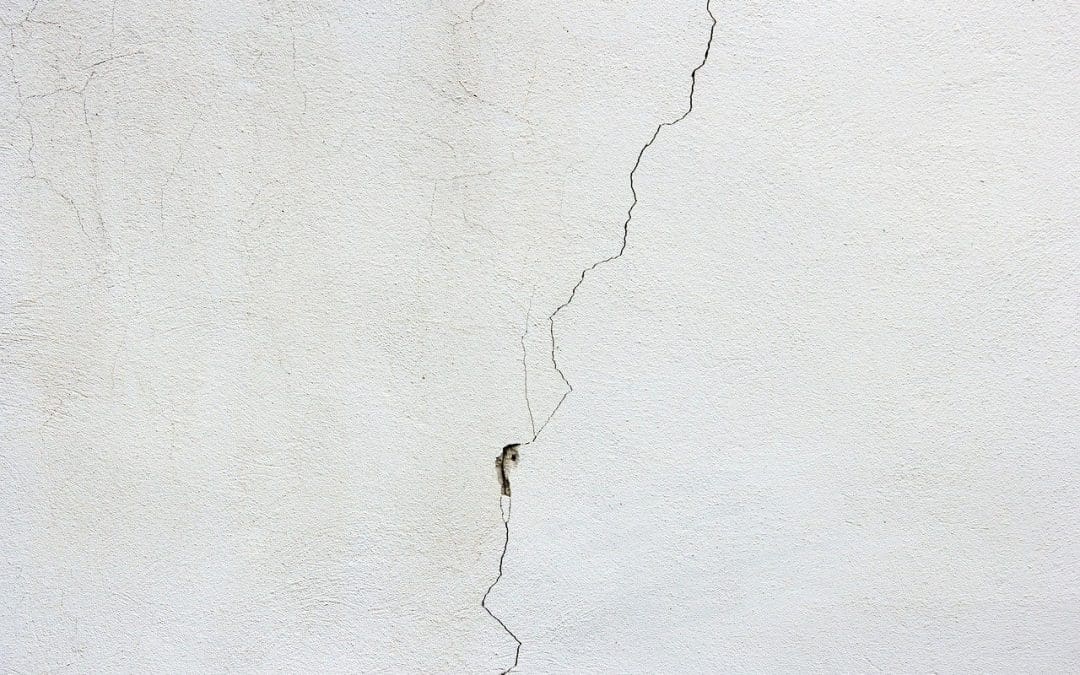Dealing with structural problems in your home can be overwhelming, but catching issues early makes a difference. Your home is one of your biggest investments, and taking care of it is essential. Knowing what to watch for when it comes to structural problems can help you avoid costly repairs and keep your home safe and sound. Here are some common signs of structural problems to look out for and what to do if you spot them.
Cracks in Walls and Ceilings are Signs of Structural Problems
Cracks are one of the easiest signs of structural trouble to notice. Tiny hairline cracks are usually nothing to worry about, but bigger ones can be cause for alarm. If you see cracks wider than a quarter-inch, especially horizontal ones or cracks in a stair-step pattern along bricks, it could mean your foundation is shifting or settling in a way that’s not normal.
Uneven or Sloping Floors
Have you ever dropped something and watched it roll across the room? That’s a sign your floors might not be level. Uneven or sloping floors can mean there’s an issue with the foundation, floor joists, or beams holding things up. While older homes often settle a bit, noticeable changes in your floors should be checked out.
Sticking Doors and Windows
When doors and windows suddenly become hard to open or close, it might be more than a simple fix. It could mean the foundation is shifting, causing frames to warp. If this happens along with other issues, like cracks in the walls, it’s worth getting a professional opinion.
Gaps Around Doors and Windows
Do you notice gaps forming around your door or window frames? That’s another sign of a potential foundation issue. These gaps let in drafts, pests, and moisture, leading to even bigger problems.
Bowing or Leaning Walls are Major Signs of Structural Problems
If you see walls that bow, bulge, or lean, that’s a clear warning sign. This is especially common in basements, where the pressure from the soil outside can push walls inward. Ignoring this can lead to serious structural failures, so it’s important to address it quickly.
Cracks in the Foundation
The foundation is the base of your home, so cracks here shouldn’t be ignored. Small vertical cracks might be okay, but larger cracks or ones that run horizontally or in a zigzag pattern can mean there’s pressure or movement causing damage. These need to be checked out by a professional.
Water Damage and Mold
Water damage is a common culprit behind structural issues. If you spot water stains, mold, or damp areas, it might mean there’s a leak or poor drainage affecting your home’s structure. Over time, moisture can weaken wood, rust metal parts, and cause rot—all of which can lead to big problems.
Roof Problems
A sagging roofline or dips in your roof can be a sign that something’s not right with the roof framing. This could be from too much weight, poor construction, or water damage. If you see these issues, don’t wait to get them checked out, as they can lead to leaks or worse.
Chimney Cracks and Leaning
Chimney damage can be a canary in the coal mine for structural problems. If it’s cracking or starting to lean, it’s often a sign of foundation movement or shifting soil. Since a damaged chimney can be dangerous, it’s important to address this as soon as possible.
What to Do If You Notice Signs of Structural Problems
If you think your home might have structural problems, don’t panic, but don’t ignore it either. Start by taking notes and photos of what you’re seeing. Then, reach out to a structural engineer or a trusted contractor to evaluate the situation. The sooner you get a professional involved, the easier and less expensive it’ll be to fix the problem.
Frequently Asked Questions on Signs of Structural Problems
Are all cracks in walls a sign of structural problems?
Not always. Small hairline cracks are usually harmless, but bigger cracks or ones that grow over time could mean an issue.
How can I tell if my foundation is shifting?
Look for cracks in the foundation, uneven floors, or doors and windows that stick. If you notice these things, it’s time to call in a professional.
Can structural problems be fixed?
Absolutely! Most structural issues can be repaired, and the sooner you address them, the less invasive and expensive the fix will be.
How much do structural repairs usually cost?
It depends on the problem. Small repairs might be a few hundred dollars, while big foundation fixes can cost several thousand.
Should I buy a house with structural issues?
It depends. Get a professional inspection to understand the problem and the cost to fix it. If you’re comfortable with the repairs, it could still be a good investment.
Jamie Schaefer, Professional Home Inspector, provides inspection services to The Villages, Florida, and the surrounding cities and towns in Central Florida and the New York Metropolitan Area. If you’re buying or selling a property, contact us to request an appointment.

